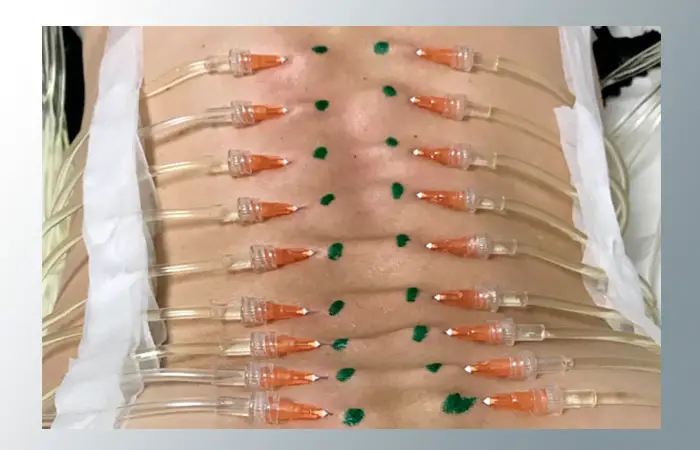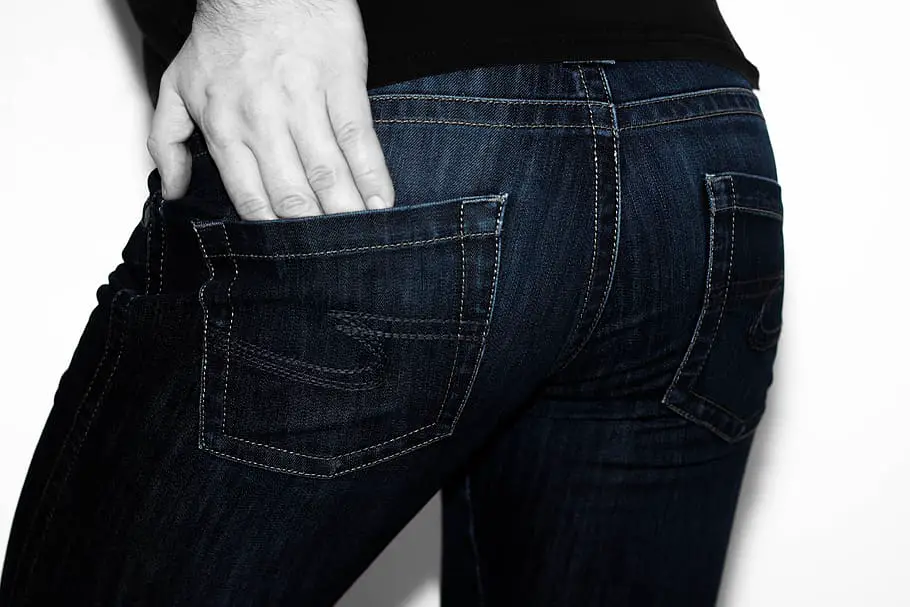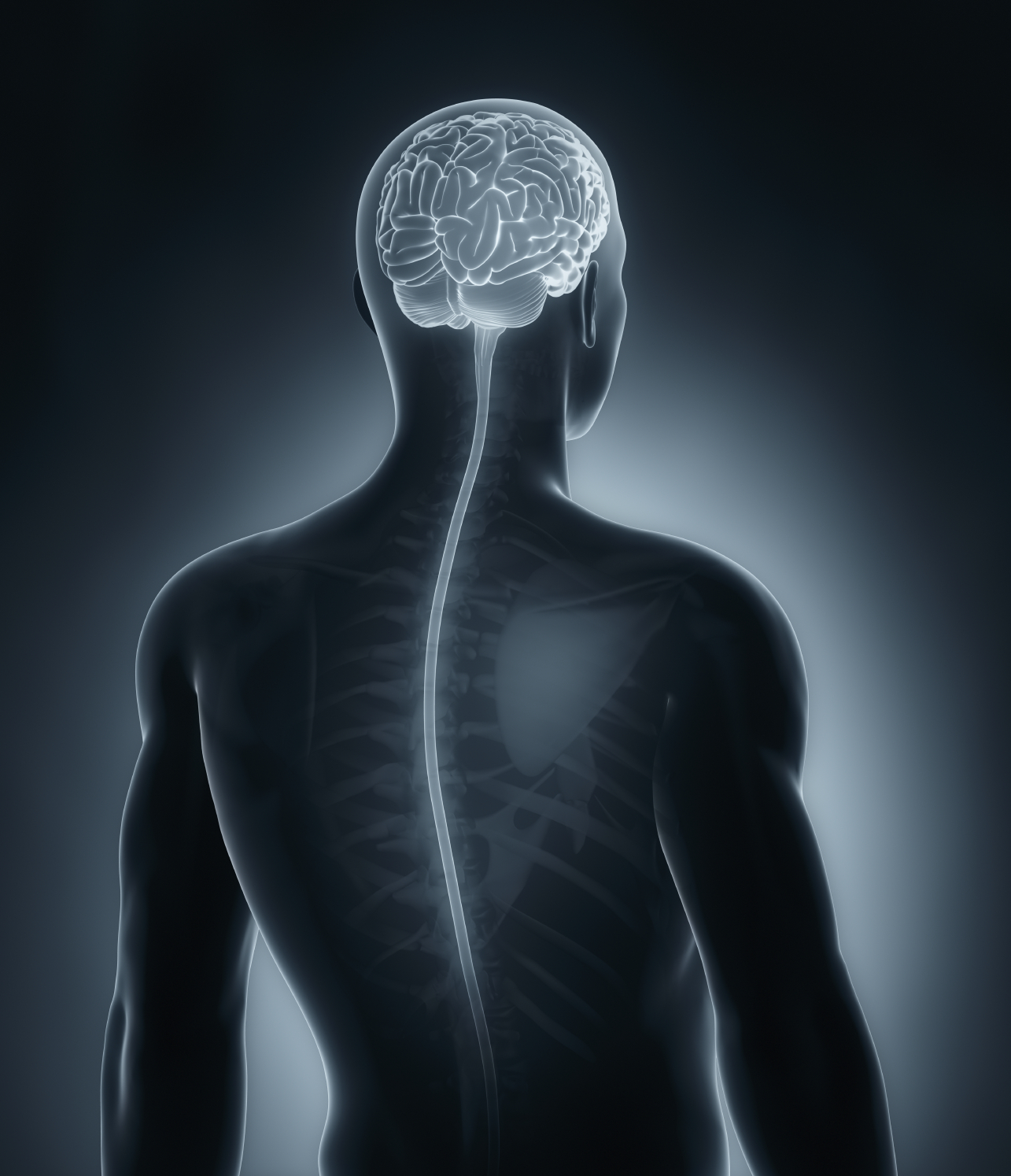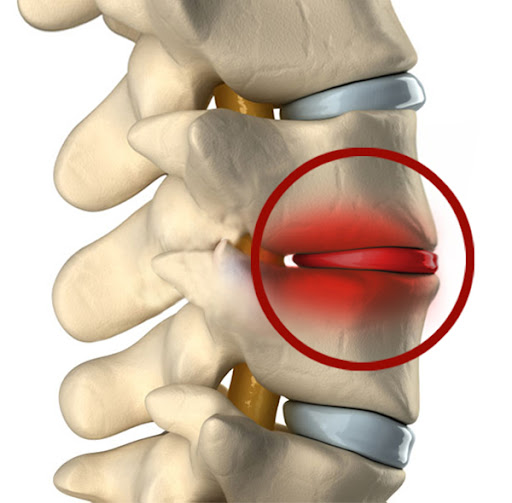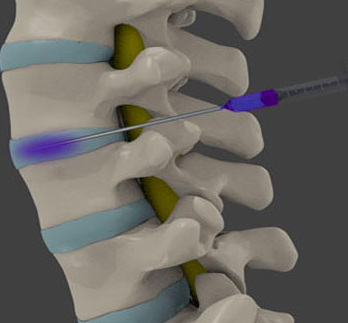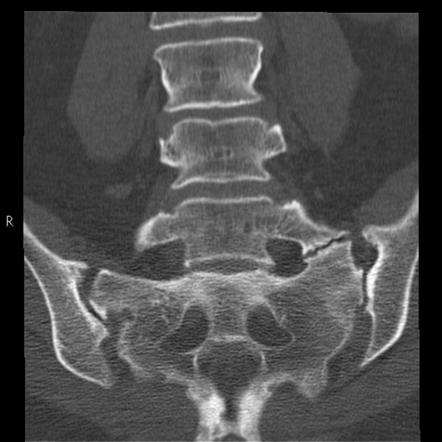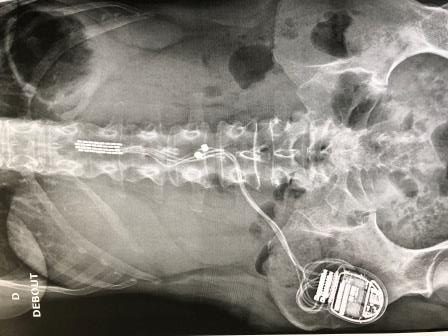Article reviewed and approved by Dr. Ibtissama Boukas, physician specializing in family medicine
To relieve the discomfort or pain related to particular diseases, there are various alternative treatments. L'percutaneous hydrotomy is an example. We are also talking about a extracellular hydration.
What does this method consist of? What are the main indications for this therapy? What about its cost? Is it reimbursed by health insurance? Are there any risks and side effects associated withpercutaneous hydrotherapy?
We have it covered for you in this article.
Definition of percutaneous hydrotomy
THEpercutaneous hydrotomy is a medical practice based on the mesotherapy. Developed by Dr. Bernard Guez, it consists of inject saline (or 0,9% sodium chloride) to a patient in order to treat their painful symptoms.
The injection area varies depending on the disorder to be treated. It can be inside the dermis (intradermal), or inside the subcutaneous layer of the skin.
Percutaneous hydrotherapy consists in bringing useful elements to the patient. For instance :
- mineral salts;
- trace elements (to speed up natural chemical reactions);
- magnesium (for its regulation of neuromuscular transmission);
- silicon;
- vitamins reserved for injection (for their regenerative and neurotropic properties;
- certain drugs.
The act can be performed by “state-certified nurses”. However, the prescription must always be made by a doctor. Before it is carried out, a general health check on the patient must be established. This may include blood tests and X-ray workups.
THEhydrotomy percutaneous is based on three techniques: la mesochelation , mesovaccination and mesoperfusion.
La mesochelation corresponds to the injection of two products which are saline solution and EDTA (or Ethyl-Diamino-Tetra-Acetic acid). Above all, it allows hydration and detoxification of the bone. EDTA will also promote the elimination of excess calcium around the joint, and provide tissue detoxification. This technique also allows stimulation of the small blood circulation.
About the mesvacination, it has the same principle as the usual vaccination. Its purpose is to stimulate the mucous membranes of the subject to improve the immune defense.
The last technique is mesoperfusion. As the name suggests, it is an infusion (intradermal or subcutaneous injection). This infusion can only be a physiological saline solution. It can also be combined with one or more other molecules. The main molecules concerned are:
- vitamins;
- vasodilators (products that promote the dilation of blood vessels);
- analgesics or painkillers;
- the minerals.
The mesoperfusion technique is mainly distinguished by its action which remains limited on the area to be treated. Some doctors prescribe it because it has almost no side effects.
Procedure
Once it is determined that the patient can benefit from percutaneous hydrotomy, they are placed in a comfortable position for treatment. For back pain, it is often prone position (on the stomach) with the lumbar region exposed.
The technique involves the slow injection using several fine needles (4 mm) of a solution containing saline on the area to be treated. To ensure patient comfort, procaine, a local anesthetic, can be injected beforehand. In all, theThe duration of a session is approximately one hour.
What are the indications for this medical technique?
The indications for percutaneous hydrotherapy are numerous, the main ones being joint pain, chronic pain and back pain. The effects of this treatment would be particularly rapid. Patients report being relieved after a few days of the first session. The most affected joints are the knees, back and hips.
This practice is also indicated in case of herniated disc, degenerative disc disease ou disc protrusion. According to the theory, the physiological injection of the serum would make it possible to rehydrate the intervertebral disc, to make it return to its normal size, to increase blood circulation locally, and to make the pain disappear.
It should be noted, however, that each case is different, and that this hypothesis is not supported by enough scientific evidence. You will have to consult your doctor and see what is going on to know the most appropriate treatment.
Hydrotherapy is also effective in the treatment of migraines. It relieves the pain felt in the jaws or temples.
Percutaneous hydrotherapy has its place in the management of tinnitus. This is the misperception that we hear in the ear. They can manifest themselves in different ways: buzzing, whistling, crackling...
It is also effective against nerve pain including lower back pain, radiculalgia, sciatic et cruralgia. This technique is used to relieve sciatic pain and other neuralgia.
THEextracellular hydration intervenes in several digestive affections. These are in particular pathologies of the colon, in particular colitis and Crohn's disease.
Percutaneous hydrotherapy is also involved in the treatment of various inflammations of the ENT tract. It is effective against rhinitis, bronchitis, or even sinusitis.
For psychological conditions, percutaneous hydrotherapy alleviates symptoms of anxiety and minimal depressions. Likewise, it could eliminate feelings of stress.
As for dermatological problems, this therapy is often used to solve problems of cellulite and hair loss.
What practice to use?
Of the three percutaneous hydrotherapy techniques, mesoperfusion is the most used. It intervenes in particular in the treatment of digestive diseases, osteoarthritis and cellulite. It is also the one that is the most common in the treatment of low back pain.
Mesovaccination, on the other hand, intervenes in infections and inflammations. Doctors prescribe it in particular for ENT problems as well as gastritis and colitis.
For mesochelation, it mainly relieves joint ailments. It is also the most suitable in the face of bone degeneration. Indeed, it is effective against osteoporosis, osteochondritis and osteoarthritis, with the proposed mechanism eliminating excess calcium around the affected joint.
The benefits of hydrotomy percutaneous are numerous and interesting. If performed by competent practitioners, one can be confident of having favorable results. These are usually satisfying and quick. There are patients who do not hesitate to testify to excellent fitness. They report being able to perform their daily routines such as housework and gardening. Others have even assured that they can play sports again.
With the action of various techniques, percutaneous hydrotherapy intervenes in the treatment of the causes of the affection. This is reflected above all in its actions on the articular apparatus. This therapy promotes tissue regeneration of the joints by nourishing the cells.
What about price and refund?
In percutaneous hydrotherapy, we often speak of “very low economic cost”. The price range varies between 30 and 80 euros. You should know that this price depends on the practitioner. In other words, it is not the same for a doctor and a nurse.
The cost of the procedure also depends on the hydrotherapy technique performed by the practitioner. It should also be noted that a single session may be sufficient. If the cases are more difficult to treat, they will be carried out several times. The estimated maximum number of sessions is twelve. The cost is often different between the first session and the following ones. It is more expensive during the first consultation because of the initial evaluation and the implementation of the treatment.
Although this practice is recognized and has an AMM (Marketing Authorization), it is not part of the regulated techniques in terms of care. Also, Social Security will not reimburse you percutaneous hydrotherapy sessions.
However, some practitioners do not hesitate to adjust their tariff according to certain situations. If the patient has, for example, a financial difficulty, he can benefit from a discount. In return, he must provide supporting documents on the reasons for this difficulty.
Risks: Is percutaneous hydrotherapy a danger?
Percutaneous hydrotherapy can have side effects like any type of treatment. However, they are minimal, mainly because this technique uses small doses and highly diluted solutions. Injections, for example, can give rise to localized infection, although this is relatively rare.
After injection sessions, the patient may feel some minimal side effects of percutaneous hydrotherapy.
We can cite :
- pain, warmth, or redness at the injection site
- a passing fever;
- transient edema;
- temporary tremors.
For the cons-indications of this practice, none is acclaimed to date. Nevertheless, doses can be readjusted in some people. These are particularly the elderly and pregnant or breastfeeding women. This technique can be used for children under the age of 15. These dose adjustments should be decided by physicians.
For those who cannot tolerate injections, an alternative solution would be the Quinton plasma. Based on thalassotherapy, this practice uses the medicinal properties of seawater to treat health problems.
Percutaneous hydrotomy: Opinion of a health professional
Reading the many indications for percutaneous hydrotomy, one could imagine that this practice can relieve almost all ailments. Similarly, the many favorable testimonials seem encouraging, and many people have seen an improvement in their condition after opting for this type of injection.
On the other hand, it should be kept in mind that at the present time, there is no scientific research demonstrating the effectiveness beyond any doubt of percutaneous hydrotomy. This leads us to question the implication of the placebo effect in terms of the therapeutic effects observed. Ideally, clinical studies should be conducted to assess the effect of this treatment on various conditions, and compare them with other available modalities.
As a health professional, it is therefore difficult to recommend this practice from the outset. For back pain, for example, it is best to start with solutions that have already proven themselves from a scientific point of view. We think for example of:
- Exercises and physical activity
- Stress management
- Sleep management
- Manual therapy
- Etc
To know 36 solutions to relieve back pain, see the following article.
On the other hand, considering the low risk of side effects and complications, it may be interesting to try percutaneous hydrotomy when conventional methods have not borne fruit. Moreover, this technique seems promising if it manages to prove itself, whether from an economic or even environmental point of view.
Obviously, it is preferable to communicate with your doctor to ensure that you can benefit from this approach, and to guarantee optimal follow-up.
Resource
Explanatory video of percutaneous hydrotomy:

